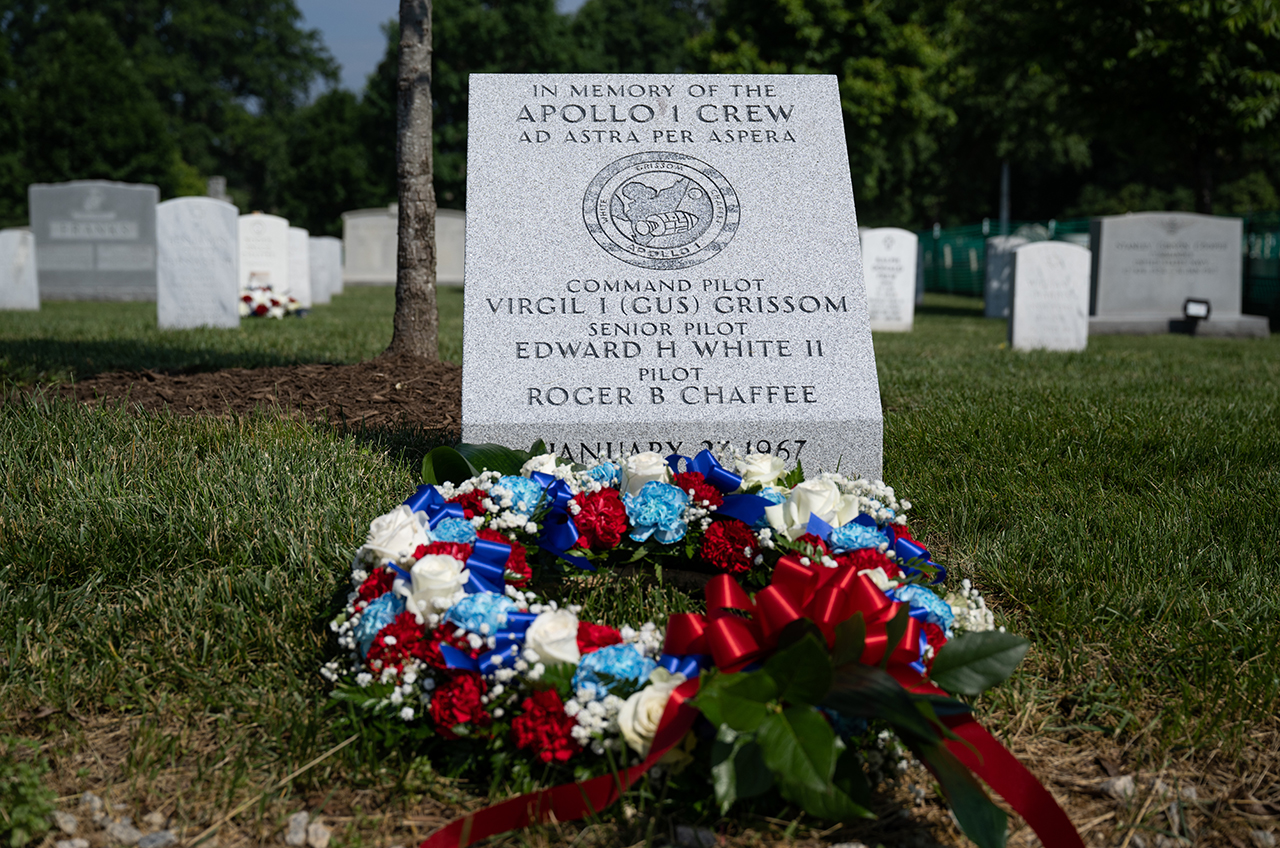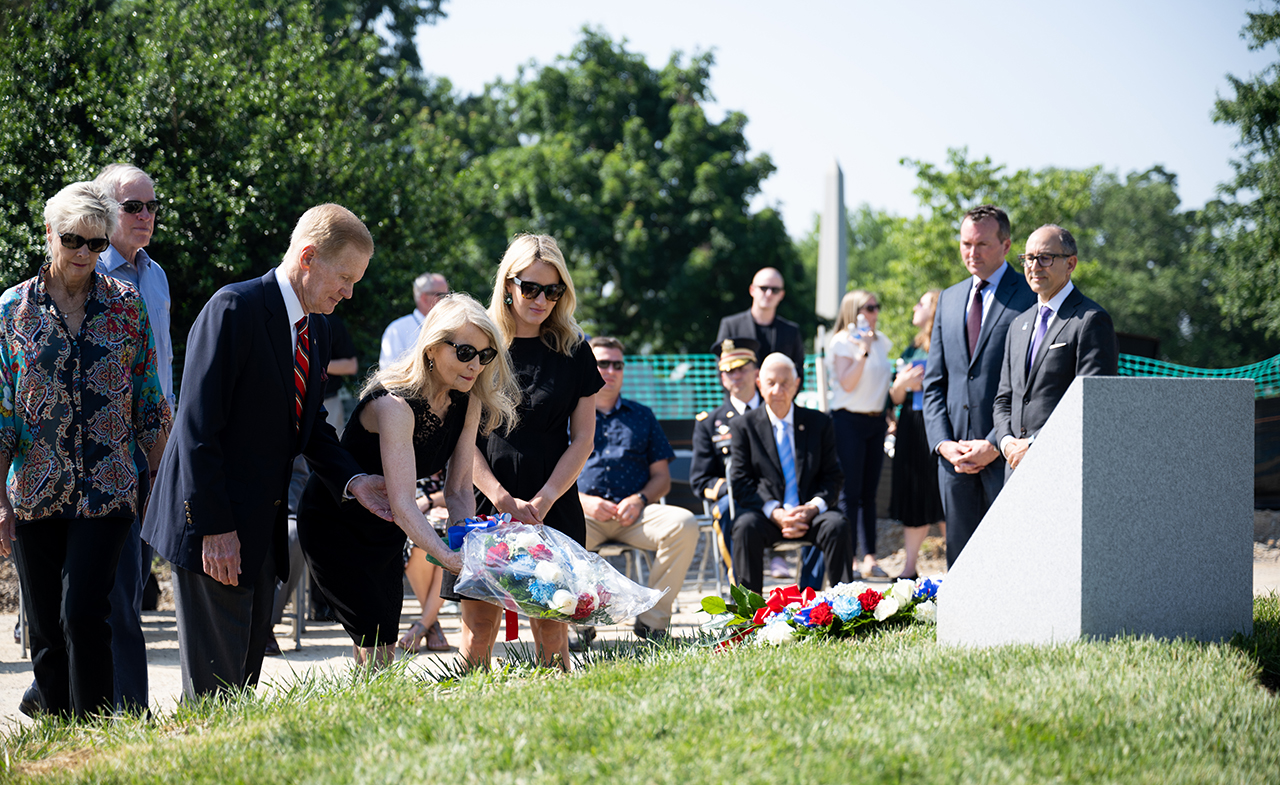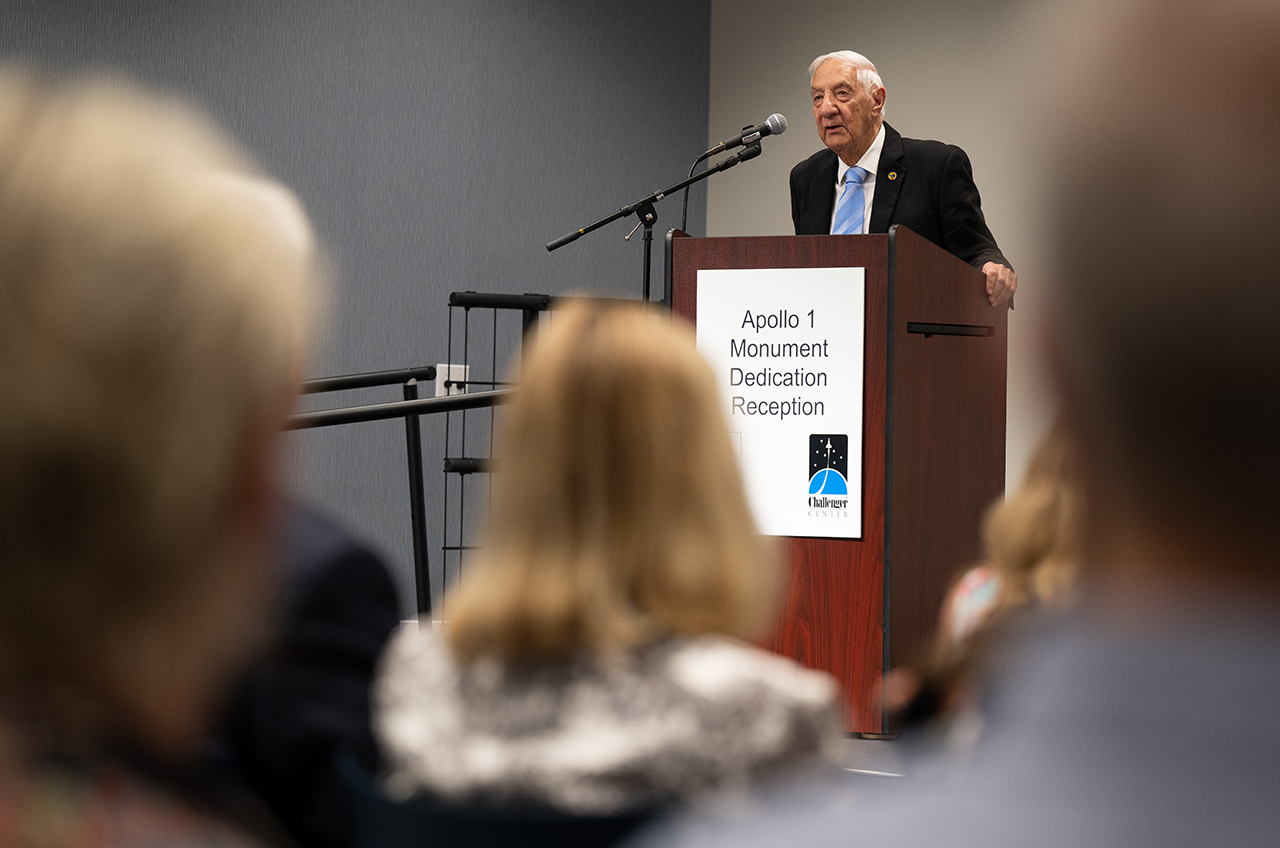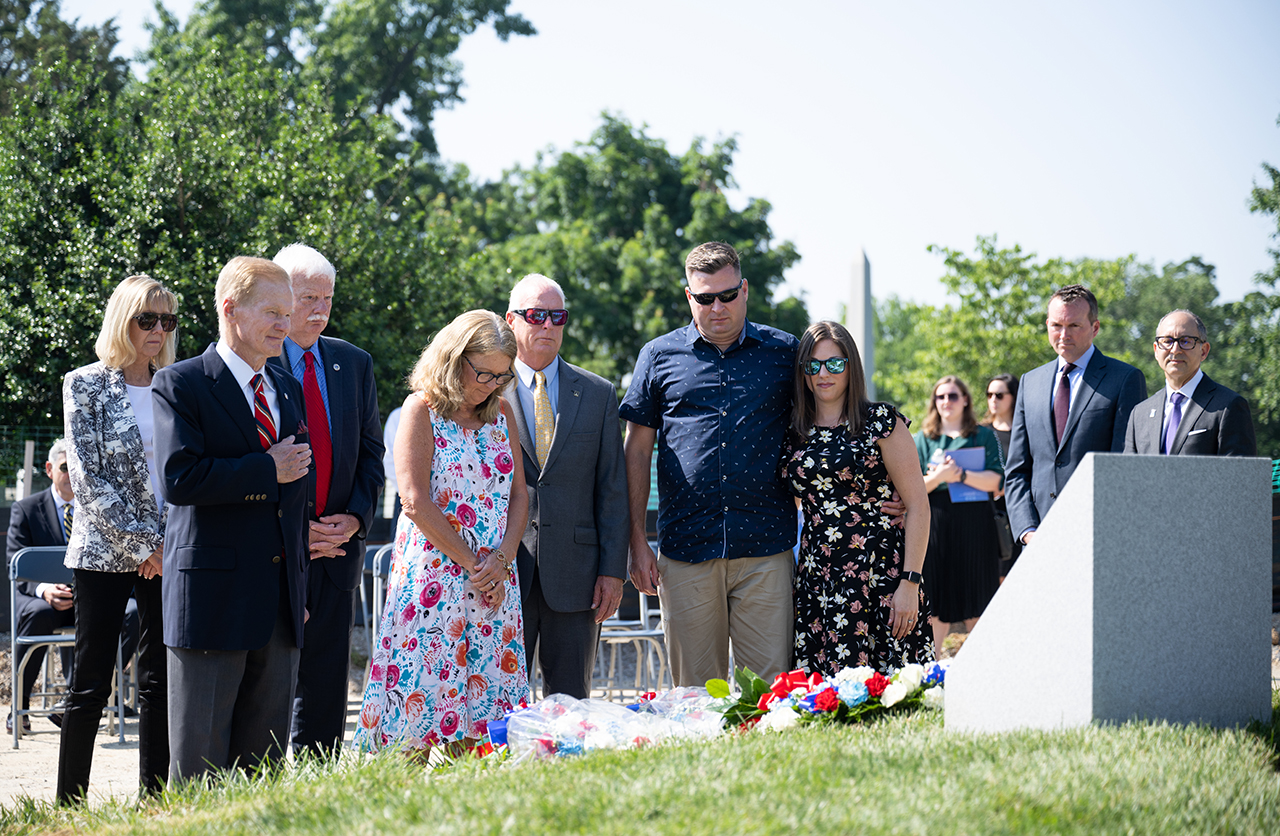Monument to NASA's fallen Apollo 1 crew dedicated at national cemetery
The new memorial honors astronauts Virgil "Gus" Grissom, Edward White and Roger Chaffee.

A monument now stands in memory of the first astronauts to die in their spacecraft, 55 years after a fire on the launchpad claimed their lives.
Family members of the fallen Apollo 1 crew came together with NASA officials, space industry leaders and members of the space community to dedicate the new monument during a ceremony held Thursday (June 2) at Arlington National Cemetery in Arlington, Virginia. The memorial is located near the graves of two of the three Apollo 1 astronauts in Section 3 of the cemetery.
"Today, we joined our space community to honor and commemorate the crew of Apollo 1 — Gus Grissom, Ed White, and Roger Chaffee," NASA Administrator Bill Nelson wrote on Twitter. "The new Apollo 1 monument at Arlington National Cemetery signifies the importance of these individuals and recognizes the crew's legacy in space exploration and American history."
Related: 55 years after Apollo 1 fire, NASA's lessons live on as Orion aims for the moon

Nelson was joined by Eric Fanning, president and chief executive officer of the Aerospace Industries Association (AIA), and Lance Bush, president and chief executive officer of the Challenger Center for Space Science Education in delivering remarks during the dedication. Lowell Grissom, Virgil "Gus" Grissom's brother, and Sheryl Chaffee, the daughter of Roger Chaffee, laid flowers with members of Ed White's family before speaking at a reception held at the nearby Military Women's Memorial.
On Jan. 27, 1967, Grissom, White and Chaffee climbed aboard their spacecraft, the Apollo 204 command module, for a pre-launch "plugs-out" test on top of their Saturn IB rocket. A post-fire investigation found it likely that a spark from a faulty wire caused the rapid ignition of material in the cabin's pure-oxygen atmosphere, engulfing the interior in flames, which led to the three men's deaths.
Although other astronauts had died earlier in aircraft and automobile accidents, the Apollo 1 fire marked the first time that the U.S. space program suffered a fatal tragedy as part of its active spaceflight efforts.
Breaking space news, the latest updates on rocket launches, skywatching events and more!
Grissom and Chaffee were interred at Arlington. Ed White was buried at the Military Academy at West Point in New York.

The new stone monument is engraved with the Apollo 1 mission patch and reads, "In Memory of the Apollo 1 Crew, Ad Astra Per Aspera" (the latter Latin for "Through Hardships to the Stars"). The crew's names and mission roles appear above the date of their death.
A memorial to the Apollo 1 crew was first proposed in Congress in 2016 by Rep. Eddie Bernice Johnson (D-TX), then ranking member (and now chairwoman) of the Committee on Science, Space, and Technology. Johnson originally introduced the idea for the monument in a dedicated bill, but after it failed to reach a vote, she resubmitted the "Apollo 1 Memorial Act" as an amendment to the National Defense Authorization Act. The act was signed into law in December of that year.
The legislation as enacted did not allocate funds to build or erect the monument. Instead, the act directed that the monument be privately financed, which led to the involvement of the AIA, which represents 300 members of the aerospace and defense industry.
The Apollo program: How NASA sent astronauts to the moon

With its installation, the Apollo 1 monument now joins the memorials at Arlington for NASA's two subsequent human spaceflight tragedies. The monuments for the STS-51L Challenger and STS-107 Columbia astronauts were dedicated in 1987 and 2004, one year after they were lost.
The Apollo 1 crew is also memorialized on the Space Mirror Memorial at NASA's Kennedy Space Center in Florida, where the hatch from their command module is on nearby display. Craters on the moon and hills on Mars have also been named for Grissom, White and Chaffee.
Follow collectSPACE.com on Facebook and on Twitter at @collectSPACE. Copyright 2022 collectSPACE.com. All rights reserved.

Robert Pearlman is a space historian, journalist and the founder and editor of collectSPACE.com, a daily news publication and community devoted to space history with a particular focus on how and where space exploration intersects with pop culture. Pearlman is also a contributing writer for Space.com and co-author of "Space Stations: The Art, Science, and Reality of Working in Space” published by Smithsonian Books in 2018.
In 2009, he was inducted into the U.S. Space Camp Hall of Fame in Huntsville, Alabama. In 2021, he was honored by the American Astronautical Society with the Ordway Award for Sustained Excellence in Spaceflight History. In 2023, the National Space Club Florida Committee recognized Pearlman with the Kolcum News and Communications Award for excellence in telling the space story along the Space Coast and throughout the world.

